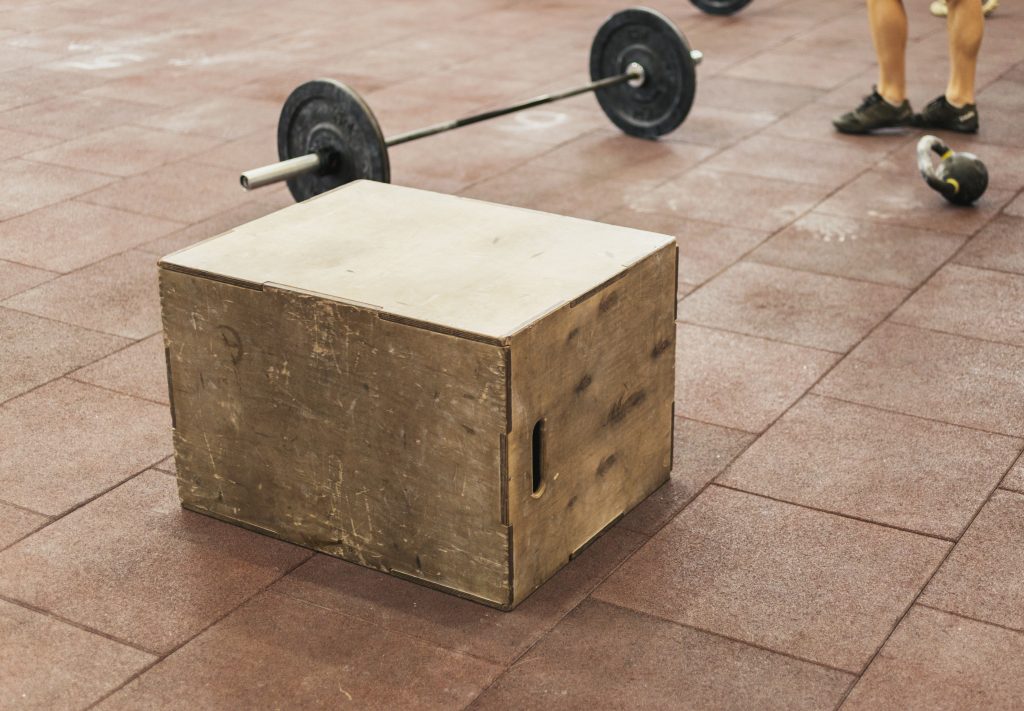I often joke that when other coaches and fitness professionals come shadow or observe me for a day that they leave underwhelmed by what they see.
“Huh, Tony’s not really doing anything innovative or exciting with his athletes and clients. I mean, sure, it’s interesting he refuses to wear pants, but all in all…he’s pretty lame.”
Now, I don’t necessarily feel what’s written above is precise representation of their inner dialogue, but I will admit…
…I’m lame AF when it comes to the exercises I prescribe and the programs I write.
Also, the no pants comment is a joke.1

Simple Before Sexy
Let’s discuss the box jump.
Peruse social media and you’ll see a bevy of videos from coaches showcasing their athlete’s jumping prowess. Some are “vanilla” and “quiet” in nature, simply highlighting an athlete jumping onto a box with little to no fanfare.
My favorite.
Others, however, will go out of their way to “one-up” everyone else and seemingly highlight a video that’s more concerned with garnering likes and increasing “viralability” than offering anything useful or of substance.
Don’t get me wrong: There’s a time and place to have fun and to not take things so seriously.
I get it.
That said, with regards to youth athletes (and, to be honest, even with high level or professional athletes 98.2% of the time) I don’t feel this sentiment applies or is warranted.
Videos of athletes/clients jumping to boxes at 40, 50, or even 60+ inches in height (with poor form) and/or that involve circus like acts – such as jumping onto a stack of foam rollers while juggling a pair of chainsaws – don’t impress me much.
I don’t have enough eye rolls to give.
I want my athletes to do the simple things, and do them well.
Here’s one of my high school basketball players – Theo, 15 – performing a Box Jump to a 1-Legged Landing.
Could we have used a higher box?
Maybe.
Could I have had him look straight into the camera after sticking each rep, rip his shirt off, and yell “THIS….IS….SPARTA“?
Next time.
Neither is the point of the drill, though.
The point is to:
1️⃣ Learn to create force (putting force into the ground to propel him up), but to also ABSORB it and learn to decelerate.
Athletes need to know when (and how) to turn on their brakes. It’s serves no advantage to ALWAYS focus on the throttle, or acceleration.
I often tell my athletes to “land like a ninja.”
If I hear a loud THWAP when (s)he lands, especially if I’m across the room, and even more especially if it’s over a sick Tiesto beat in the background, then I know they’re not landing correctly.
Too, if the landing is noisy, the height of the box may be too aggressive. Train force development (the jump) AND force absorption (the landing) and NOT the ego.
I’m more concerned with the fact Theo had no idea who A Tribe Called Quest was before he started training with me then I am about the height of the box he’s jumping onto.
2️⃣ OWN the landing.
I shouldn’t see any “excessive” caving-in of the knee or foot as he lands. Nor should I see his posture collapse as he lands on the box.
If that is the case the height of the box is likely too aggressive.
Lower it.
Moreover, there’s nothing wrong with performing Single-Leg Hops on the ground. It isn’t sexy, it won’t win you any “innovative coach of the year awards,” but by gosh will it ever transfer more eloquently to the daily needs of your athletes/clients.
On a Side Note: I told Theo to hold his landing position for a 1-2s count so we could reinforce it. Slowing athletes down is often advantageous so they learn what appropriate positions look and feel like.
3️⃣I also feel appropriate technique requires stepping off the box rather than jumping off it back to the ground…👍.
4️⃣ Oh, I also feel you’re cra-cra if you haven’t started watching Mindhunter on Netflix yet. Season two just came out.
Get to it.
NOTE: And yes, I understand that on Theo’s first rep his knees caved in a little as he was generating force. Not ideal, something we’re going to work on, but certainly not an egregious error and nothing where I felt he was going to hurt himself.
My expectation isn’t perfection out of the gate – especially with beginners (of any age) – but each rep got progressively better, and subsequent sets were even more betterer.
God, I’m a wordsmith.
In any case, there’s always going to be a learning curve when introducing new exercises, even the “simple” ones.



